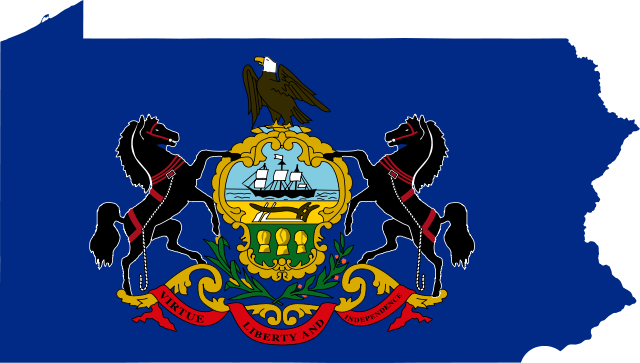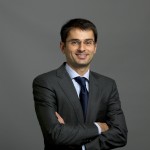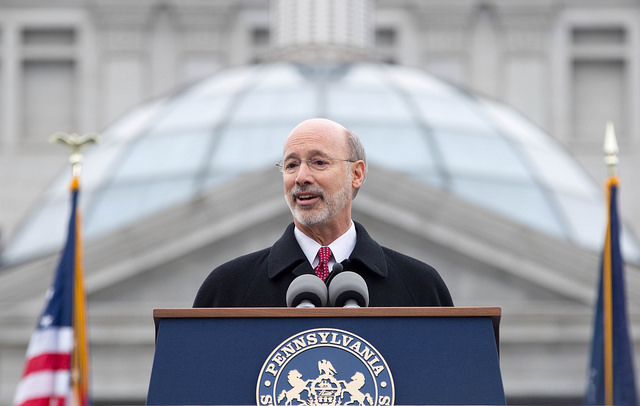Conspiracy theorists have no shortage of ideas about who runs the world, which secret cabal is meeting in private to count cash and pull strings: the Bilderberg Conference, maybe, or the Trilateral Commission, or even Yale’s Skull and Bones society.
But in investing, the answer isn’t so sinister, nor is it even a secret. In fact, on this chilly autumn day, you can find a cadre of financial lever pullers walking the halls of downtown Toronto’s Ritz-Carlton Hotel, clutching their morning cups of coffee and slipping discreetly into meeting rooms: the world’s top pension-fund managers. Collectively the investors who gathered for the International Pensions Conference—among them, fund managers from the U.S., U.K., Canada, the Netherlands, and Japan—are stewards of $2.5 trillion, a very significant chunk of the world’s assets.
Circulating through this crowd is Ron Mock, head of the Ontario Teachers’ Pension Plan. The avuncular, unassuming 62-year-old “host CEO,” his name tag reads—is moderating panels and introducing guest speakers; he also has the distinction of offering opening and closing remarks. Mock has a modest mien befitting a lifelong usher at Toronto’s Maple Leaf Gardens arena. But among fellow pension managers, Mock might as well be strutting around like Mick Jagger. After all, he sits at the helm of a pension plan whose track record and revolutionary approach to investing have set benchmarks for just about anyone who manages a major endowment or pension fund.
Mock’s Ontario Teachers’ Pension Plan, widely known as “Teachers,” manages a hefty $154 billion Canadian ($116 billion) in assets. It represents the collective savings of 129,000 retired Ontario teachers and 182,000 currently active ones. It’s one of the most successful plans as well, with double-digit average annual returns since 1990, including an 11.8% return in 2014 (about four percentage points better than Canada’s TSX index). Over the past 10 years, according to Toronto-based pension-fund analysis firm CEM Benchmarking, Teachers has placed among the top two performers in the world—out of 273 funds managing a total of $8.5 trillion.
So what the hell is going on north of the 49th parallel? These unassuming investors have a secret sauce that has been so successful, for so long, that pension experts have dubbed it “the Canadian model.” Canadian-model investing means minimizing passive stocks-and-bonds portfolios and buying sizable direct stakes—in companies, in infrastructure, in property. It also means running a pension fund as an independent business: no handing management reins to political cronies, no farming out research to expensive outside advisers. It means bringing in top pros and paying them handsomely, the better to keep them on board. And in Teachers’ case, it means higher-than-average returns paired with lower-than-average risk.
Of course, none of this is any guarantee of success. And although you presumably don’t have $100 billion or more to manage, chances are that you and the Teachers team are grappling with some of the same challenges: the financial strain that comes with growing longevity, as retirement assets stretch to cover 25 or 30 years of living expenses; the difficulty of investing for a long time horizon in an investing climate that emphasizes short-term results; and the fact that, after a six-year global bull market, too many assets are just too expensive. Indeed, Mock and his team are earnestly scouring this pension conference for new strategic ideas. “Market valuations are high, and there’s a lot of capital chasing every opportunity,” laments Jane Rowe, one of Teachers’ top managers.
Still, the Teachers crew has every reason to believe that sticking to the method will pay off. “If you execute the Canadian model correctly—and there is 20 years of data on this—
it is worth an extra 2% every year,” says Keith Ambachtsheer, founding director of Canada’s International Centre for Pension Management. “Compound that every year, and then look at your returns.”
Pension experts credit Teachers with originating this approach a quarter century ago, in 1990—before then the fund was little more than a collection of dusty provincial bonds. Since then Teachers has become the pacesetter for the industry, as more public-pension plans say, to paraphrase When Harry Met Sally, “I’ll have what they’re having.” “The Koreans are doing it, the Singaporeans are doing it, the Dutch are doing it,” says Larry Schloss, president of alternative-asset managers Angelo, Gordon & Co. and former chief investment officer of New York City’s pension plans. “All the largest sovereign funds are trying to do it. The Canadians have figured it out—and they have the returns to prove it.”
Ron Mock didn’t invent the model—he joined Teachers in 2001 and took the helm on Jan. 1, 2014—but he’s well aware of its influence. “Back in 2000 there were only a handful of players on the planet like us,” says Mock, an electrical engineer by training who used to be in charge of safety at nuclear plants (no Homer Simpson jokes, please). “Now there might be 150 of them. People watched where we went and what we did, and suddenly our approach became very popular.”
That popularity is forcing Mock and his colleagues to up their game. While Teachers used to be virtually alone among pension funds in scouring the world for innovative private deals, now it has serious competition. Trying to figure out those critical next steps: 1,100 Teachers employees, many of them housed in a nondescript office building in Toronto’s North End.
Mock is “very smart, he’s very savvy, and he hires investment people who fit that mold,” says Chris Ailman, chief investment officer for Calstrs, the $181 billion fund managing the pensions of California teachers. “His real challenge is that he inherited a dynasty that has been successful for decades, like the New York Yankees. What do you do next?”
To get a sense of how far-reaching Teachers’ strategy is, consider the myriad ways it might overlap with your daily life.
The next time you eat at an Applebee’s or a Taco Bell, for instance, you may well be interacting with Teachers, via its investment in the $1.7 billion San Francisco–based franchisor Flynn Restaurant Group. If you go to a laundromat (Alliance Laundry Systems) or take your pet to an animal hospital (PetVet Care Centers) or buy a bag of kettle-cooked potato chips (Shearer’s Snacks) or keep stuff in storage (Portable On-Demand Storage) or park your car in a pay lot (Imperial Parking) or go to the dentist (Heartland Dental Care) or buy a suit (Hugo Boss) or go the gym (24-Hour Fitness) or wear outdoor gear (Helly Hansen), you’re crossing paths with Teachers’ investments.
And that’s just within the U.S. If you’ve ever traveled through airports in Copenhagen or Brussels, or Birmingham or Bristol in England, or taken the high-speed train connecting London with the Channel Tunnel, you’ve been sending a few bucks to Ontario Teachers. If you shop in any large Canadian mall, you’re probably setting foot in part of a Teachers-owned real estate portfolio. Oh, and the Ritz-Carlton where I recently sat with Mock, Teachers co-owns that particular one, along with Ritz-Carlton itself, through Teachers’ $28 billion Cadillac Fairview real estate operations.
Of course, lots of portfolio managers can claim similar breadth. Many mutual funds, in both actively managed and index forms, have hundreds or even thousands of stock holdings. But few can claim the operational influence that Teachers has on the companies it invests in.
In a conversation in a Toronto boardroom, two of Teachers’ heaviest investment hitters walk Fortune through the fund’s process. The two are very, well, Canadian. Mike Wissell heads Teachers’ public equities investing, when he’s not taking his kids to hockey practices or cheering Blue Jays games at the SkyDome. Jane Rowe, who runs the fund’s private equity arm, has a boast-worthy track record—Teachers’ private equity holdings have averaged annual returns of 19.7% since 1991 and are now valued at $21 billion Canadian—but she’s more likely to reminisce about Newfoundland and getaways to her cottage in Ontario’s Muskoka region.
Still, as pleasant as they seem, Wissell and Rowe send a clear message that Teachers’ money is not to be messed with. If the fund buys a stake in your private firm, they explain, it would like to help call the shots. No 5% or 10% slice, thanks; more likely it will shell out for 30%, 40%, 50%, or more. Oh, and Teachers will want a board seat. Did they mention that? “It’s not unusual for us to have absolute control,” says Rowe. “That is very rare in the pension-plan world.”
If Teachers takes a stake in your company, and it doesn’t like what it sees, big changes may come and management heads may roll. When Teachers pushed McGraw-Hill to split up its business—well, it split up its business, in 2011. Teachers supported hedge fund rabble-rouser Bill Ackman in his battle with CP Rail, leading to the departure of CEO Fred Green in favor of E. Hunter Harrison in 2012. The fund also objected to what it saw as excessive compensation of top management at Sprint Nextel, contributing to the replacement of CEO Dan Hesse by Marcelo Claure.
“It is the most proactive pension fund in Canada,” says John Coffee, a law professor and corporate-governance expert at Columbia University. “It is activist—but hardly the most aggressive.” Indeed, there’s a marked difference in style between Teachers and many American activists: While the latter often take their campaigns public, making themselves part of the narrative, Teachers does its talking behind closed doors, says Ambachtsheer, the pension expert.
Teachers’ managers insist they don’t seek control for its own sake but in order to grow their business. And their successes show their impact. When the fund bought out vitamin giant GNC in 2007, it helped GNC expand into new markets and prepped the company for its IPO before selling out in 2012—having made five times its original investment. When it bought Alliance Laundry from Bain Capital in 2005, Teachers replaced the CEO and made key acquisitions—and has since scored a return of eight times its money. And when Teachers sold its 80% stake in Maple Leaf Sports and Entertainment, owner of hockey’s Toronto Maple Leafs, it got a princely $1.32 billion. Teachers had originally bought half the company, in 1994, for just $44 million—building it into a powerhouse with additions like basketball’s Toronto Raptors.
Of course, assuming big stakes also means assuming sizable risks. “You won’t meet anyone here who doesn’t have some tragic investment story,” admits Wissell. One stands out in company lore: its very first private-capital investment, White Rose Crafts and Nursery Sales, bought in 1991 for $15.75 million. Teachers foresaw grand things for the home-and-garden chain; it didn’t foresee the hit the company would take from surging competitors like Walmart Canada and Costco Wholesale. Within a year, White Rose had folded. Laments Mock: “Bankruptcy right out of the gate.”
Mock knows something about bouncing back from embarrassing adversity. After his stint at Ontario’s nuclear plants, he earned an MBA and started working for the investment dealer now known as BMO Nesbitt Burns. Eventually he became head of a hedge fund, Phoenix Research and Trading. In 2000 the fund tanked, wiping out $125 million in assets. Regulators found that a rogue trader was at fault for having amassed unapproved bond positions. Since Mock was head of the firm, though, the buck stopped with him. He was reprimanded by the Ontario Securities Commission for lack of oversight and was barred for years from becoming a public-company director or officer.
Given that car crash, it is perhaps surprising that Mock was hired the year after by Teachers. Commissioned to steer its alternative assets, he rewarded the trust he’d been given by launching initiatives like Ole, a music-rights-management company that now owns the lucrative catalogues of artists like Rush and Timbaland. He was given the keys to the fund entirely in 2014, when he became the plan’s president and CEO, with former head Jim Leech praising Mock’s appointment as “outstanding.”
“I learned a lot from that experience,” Mock says of the Phoenix flameout. “People will be people. But you have to have a governance structure in place to prevent those things from happening. As the adage goes, trust—but verify.”
In the U.S., trust in public-pension programs is in short supply, and understandably so. Teachers is a fully funded plan, with enough cash on hand to meet 104% of its payment obligations. In comparison, the funding ratio for state and local pension plans in the U.S. is a worrisome 74%, according to Boston College’s Center for Retirement Research.
Much of the U.S. shortfall reflects shortsighted decisions by governments to underfund their pensions, often in unfounded hope that sky-high investment returns would make up the difference. But critics say U.S. funds’ performance also suffers from meddling in investment decisions by political appointees, from restrictions on the kinds of investment strategies they can pursue—and, often, from exorbitant fees charged by advisers.
When Teachers started stacking wins, other plans started following its lead, with the Canada Pension Plan ($264.6 billion Canadian), the Ontario Municipal Employees Retirement System ($72 billion Canadian), and the Caisse de Dépôt et Placement du Québec ($225.9 billion Canadian) adopting similar philosophies. The Canadian model crossed the border as well. The Teacher Retirement System of Texas ($132.8 billion), Calstrs ($191.4 billion), and the Florida State Board of Administration ($170 billion) have all been singled out for their maple-flavored approach.
But U.S. managers say they’d like to go even further in Teachers’ direction. Hampered by traditional U.S. pension-fund rules, they feel as though they’re in a fistfight with one hand tied behind their backs. Among the problems, they say, is relatively modest manager compensation. “The Canadian model pays their in-house team much closer to market compensation than their American counterparts,” says Schloss, the former New York City official. “When I was CIO for NYC pension funds, I made $224,000. Meanwhile, a first-year associate at J.P. Morgan right out of business school made $300,000.” In contrast, Mock made a cool $3.62 million Canadian in 2014, followed closely by executive vice president of investments Neil Petroff, who earned $3.56 million Canadian, according to Teachers’ annual report.
While some U.S. pensions stand out for Canadian-style independence, the model has proved a challenging transplant. “I fear that it will take a crisis, like the Titanic hitting the iceberg, before we do anything about it,” says Calstrs’s Ailman. “Until then we all just keep banging our head against the wall trying to make our current system work.”
While publicly run American funds look on longingly, other funds have no such limitations—and that’s where Teachers’ managers are finding the stiffest competition. Mammoth university endowments like those of Harvard and Yale, and sovereign government funds from Abu Dhabi to Norway are all open to alternative assets and private ventures—and much more active in those spaces than they were when Teachers got started. And all of them share Teachers’ ability to write $500 million checks.
That’s where Teachers hopes its 20-year headstart comes in handy. It already has tentacles all over the world, with outposts in Hong Kong and London expanding to enable more boots on the ground. In its hunt for cash flow, the fund is increasingly deploying those boots in infrastructure deals. Toll roads, airport services, high-speed trains? Count Teachers in. As Mock quips, “If you’re selling an airport, I can get 15 people on a plane tomorrow.”
The sector is decidedly unsexy, but it now makes up $12.6 billion of its portfolio. Infrastructure hits a sweet spot for managers who need to pay for teacher pensions 50, 60, or 70 years out. Like the utility or railroad properties in Monopoly, they may not be marquee venues—but they are consistent, underrated revenue streams. Not long after Fortune met with Teachers’ leaders, the fund announced a deal to buy a one-third stake in the Chicago Skyway, a toll road that accommodates some 17 million passenger cars a year. For $512 million upfront, Teachers will get a share of tens of millions annually in toll income through the year 2104. The rationale is right out of Teachers’ basic playbook: It’s a “critical asset” that “will provide inflation-protected returns to match our liabilities,” says Andrew Claerhout, Teachers’ senior vice president of infrastructure.
The Skyway deal stands out for another reason: It’s one of the few big buys Teachers has made recently. After years of rising prices, in assets from North American real estate to the Dow Jones industrial average, today’s valuations make the fund’s managers nervous. While Teachers declined to comment on which asset classes look intriguing, every interviewee brought up the flood of global capital chasing limited opportunities. You get the sense they are waiting for the fever to break and for prices to come back down to earth.
In the meantime they are doing bottom-up research, unwilling to overpay. “Our bosses always tell us we don’t have to do anything,” says Wissell. “It’s okay to wait for the softballs.” Finding softballs is hard work: That’s why Jane Rowe just got back from Greenland, and Wissell from Brazil, as they scoured the globe for revenue streams. But no matter how far Teachers’ managers travel, you can’t take the Canada out of them. “We are very proud of the Canadian model,” says Wissell. “But we don’t scream it to the highest rafters. It’s just not our way.”
This is a good article on Ontario Teachers’ Pension Plan but it’s a bit of a puff piece and I’m going to take it down a notch in my comment.
This is especially true now that you have intense competition from CPPIB, PSP Investments, the Caisse, bcIMC, and a pack of other large global pensions and sovereign wealth funds. Yes, Teachers was first mover but that doesn’t mean much in the world we live in but articles like this help in terms of PR and getting the recognition when Teachers approaches partners on prospective deals.
What else do I know about Ron Mock? Unlike others, he doesn’t get swept away by performance figures and he’s always asking tough questions on hedge funds, private equity, real estate and infrastructure. He’s also not the type of guy who toots his own horn or basks in glory. The motto “complacency kills” is deeply embedded in Ron’s DNA and he has little time for mediocrity within or outside Teachers.
Ron is also lucky to have a great senior team backing him up. Whether it’s Jane Rowe, Mike Wissell, Lee Sienna or Wayne Kozun, you’ve got some very smart people at Teachers who really know their stuff. The loss of Neil Petroff who retired earlier this year as CIO of this venerable plan is huge but Ron told me “there’s been progress” in finding a suitable replacement (the person who assumes this role has big shoes to fill).
In private equity, it’s true that Teachers was the first to do direct deals and unlike traditional PE funds, it has a much longer investment horizon. But it’s also true that fund investments and co-investments make up the bulk of Teachers’ private equity investments and I would take all this fluff on direct PE deals with a shaker, not a grain of salt.
Still, Canada’s large pensions are doing a lot more internal management than their U.S. counterparts and outperforming them in terms of long-term value added over their benchmarks. Why? They have better governance, are able to compensate their senior managers a lot better and some large Canadian pensions, including Teachers and HOOPP, are also able to use considerable leverage intelligently to juice their returns.
When I look at Canada’s large pensions, I don’t get overly impressed. I’m brutally honest when I praise them and when I criticize them. So, when I tell you Ontario Teachers has the best hedge fund program or the Caisse has the best real estate group, I know what I’m talking about. Like I said, it takes a lot to impress me and I’ve been covering pensions for almost eight years on this blog so there’s nothing I’m going to read in the media which is going to make me fall off my chair.
This is why I’m very careful with articles that overtout Canada’s large public pensions. To be sure, they’re delivering outstanding results over the long-run at a much lower cost but the media’s love affair with them is misrepresenting the truth or giving you false impressions that Canada’s large pensions are competing with large dominant global private equity funds (they are but it’s peanuts in terms of their PE portfolios which is made up mostly of fund investments).
What else? While U.S. public pensions can learn a lot from Canada’s large public pensions the latter can learn a lot from their U.S. counterparts when it comes to transparency and communication. This includes making their board meetings publicly available on their websites and just being more transparent on their investments and benchmarks that govern them.
The Canadian pension model has been a success. There’s no denying this but there’s plenty of work ahead to improve the governance at these large Canadian pensions and anyone who claims otherwise is either a fool or part of the entrenched establishment which doesn’t want to rock the boat in any way because it might impact their huge compensation model.














